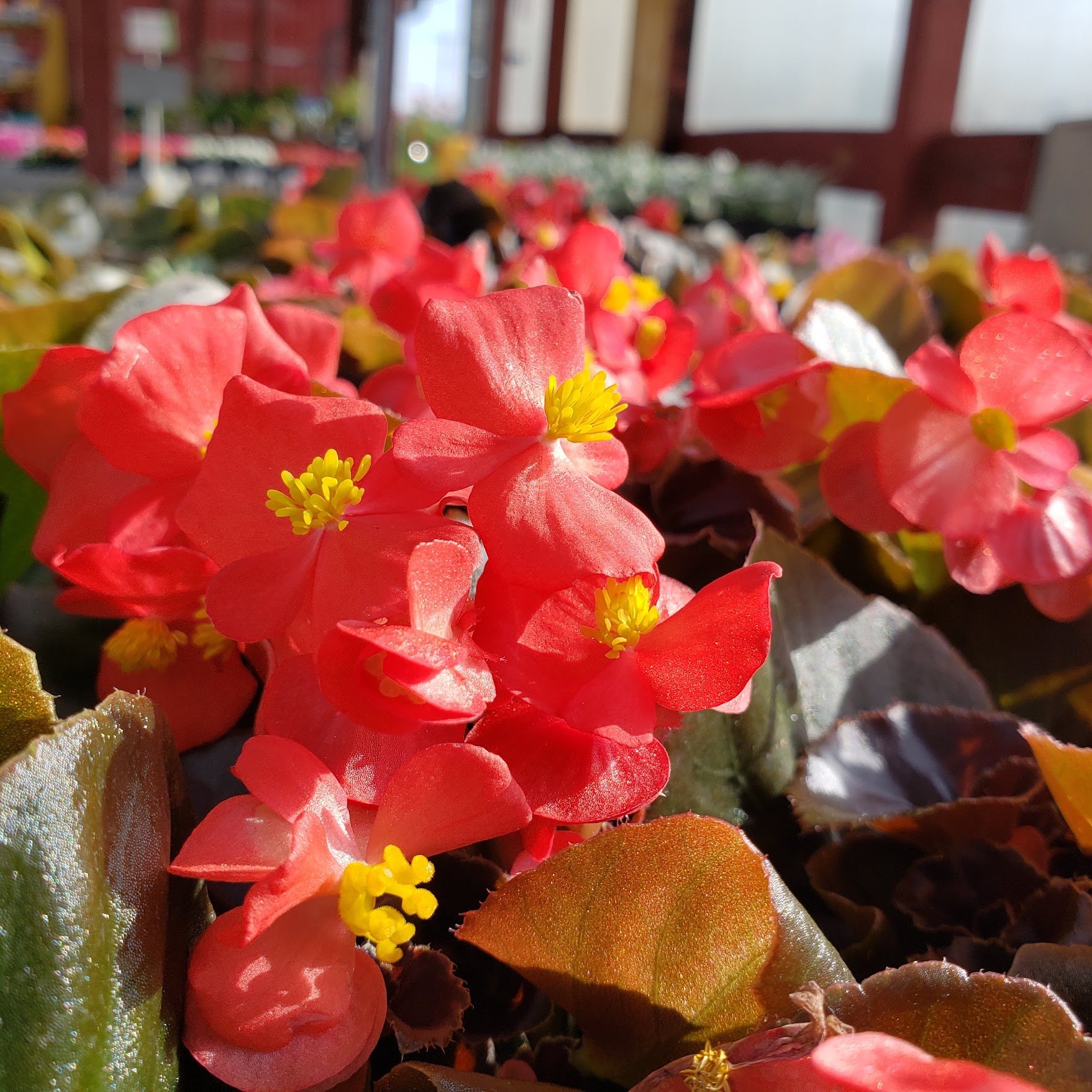Begonias are beautiful flowering plants that are easy to care for and add color to any garden or indoor space. With over 1,000 species of begonias, each with their own unique characteristics and growing requirements, it’s important to know how to properly care for them to ensure they thrive. In this blog post, we’ll go over some general tips for caring for begonias.
Lighting
Begonias require moderate to bright indirect light. Too much direct sunlight can cause their leaves to scorch, while too little light can result in leggy growth and sparse blooms. Place your begonias in a spot with bright, filtered light, such as a windowsill with a sheer curtain or on a shaded porch.
Watering
Begonias prefer to be kept consistently moist but not waterlogged. Water them when the top inch of soil is dry to the touch. Be sure to water the soil directly and not the leaves, as wet leaves can lead to fungal diseases. It’s also important to avoid getting water on the crown of the plant, as this can lead to rot. If you’re growing begonias in a container, be sure it has drainage holes to allow excess water to escape.
Humidity
Begonias thrive in high humidity, so if you’re growing them indoors, consider placing a humidifier near them or grouping them together to create a humid microclimate. You can also place a tray of water near the plants to increase the humidity around them.
Fertilizing
Begonias benefit from regular fertilization during the growing season (spring and summer). Use a balanced, water-soluble fertilizer every two weeks. Be sure to follow the instructions on the fertilizer package, as over-fertilization can lead to burnt leaves and other problems.
Pruning
To keep your begonias looking their best, prune them regularly. Remove any dead or yellowing leaves, and trim back leggy growth to encourage bushier growth. You can also pinch off spent blooms to encourage new ones to form.
Pests and Diseases
Begonias are generally resistant to pests and diseases, but they can still be susceptible to some common problems. Watch out for spider mites, mealybugs, and whiteflies, which can all infest begonias. If you notice any of these pests, try spraying the plant with a mixture of water and dish soap, or use an insecticidal soap. Begonias can also be prone to powdery mildew and botrytis, especially in humid conditions. To prevent these fungal diseases, avoid getting water on the leaves and provide good air circulation around the plant.
In conclusion, caring for begonias is relatively easy as long as you provide them with the right growing conditions. By following these tips, you can enjoy beautiful, healthy begonias in your garden or indoor space.



